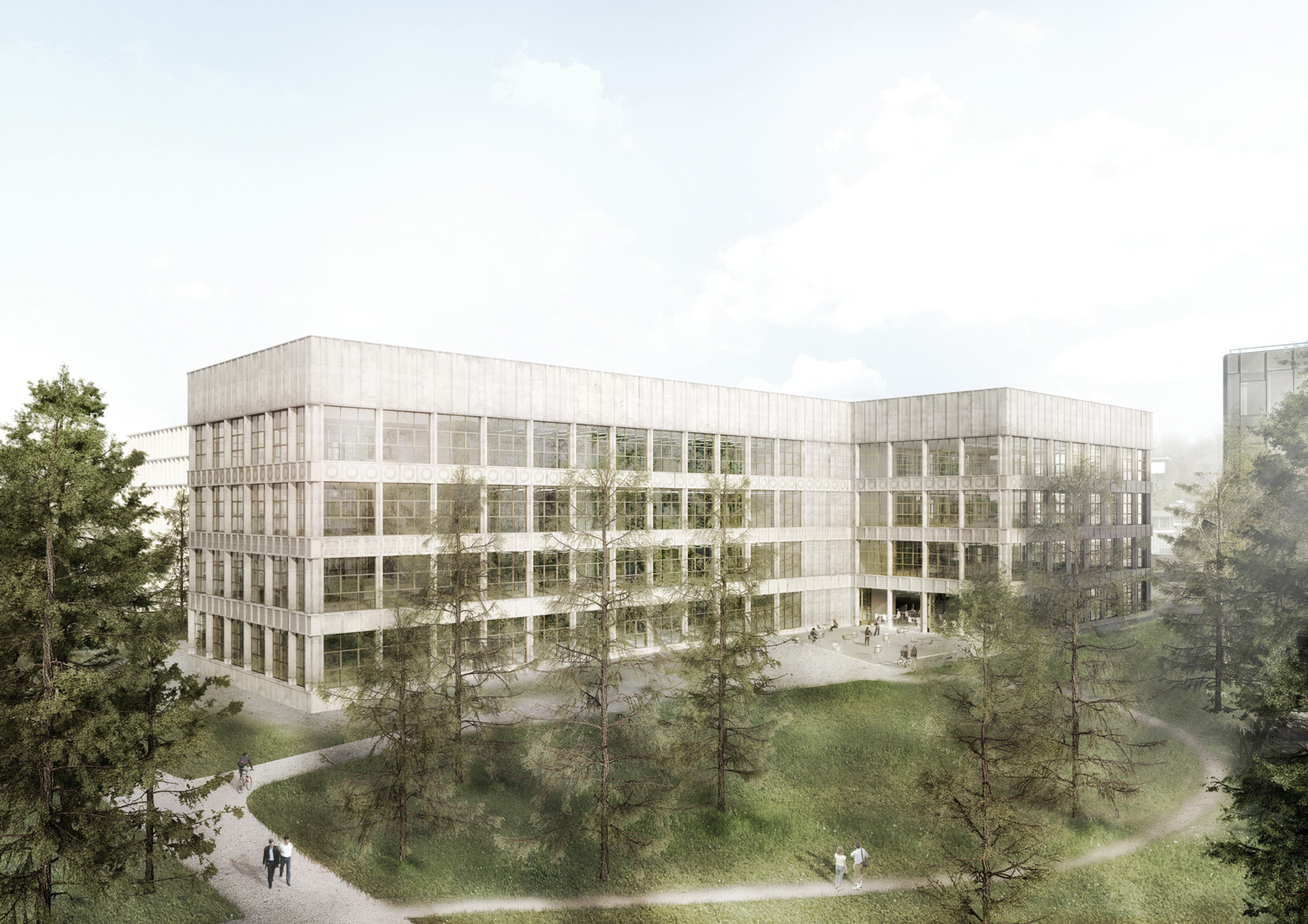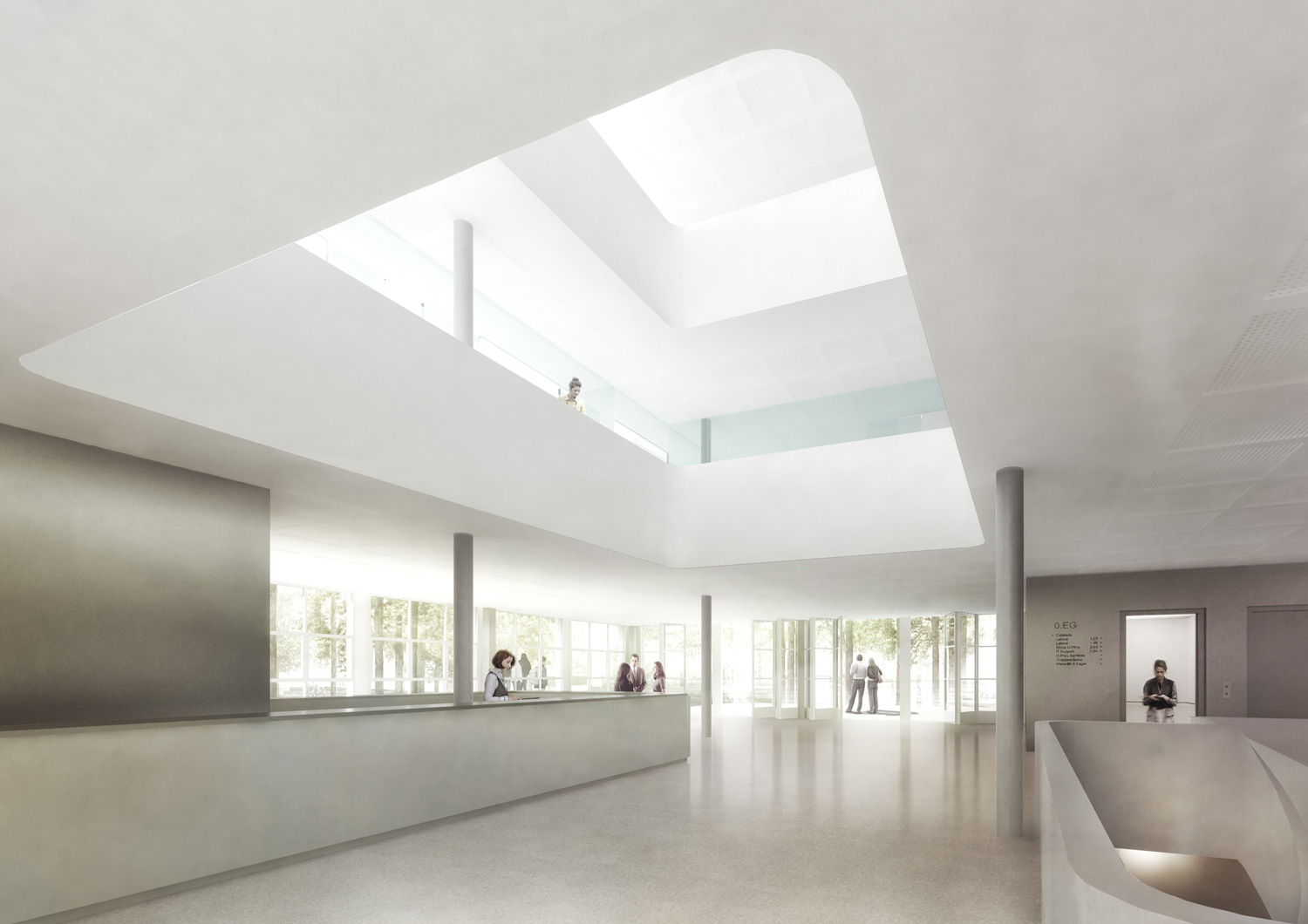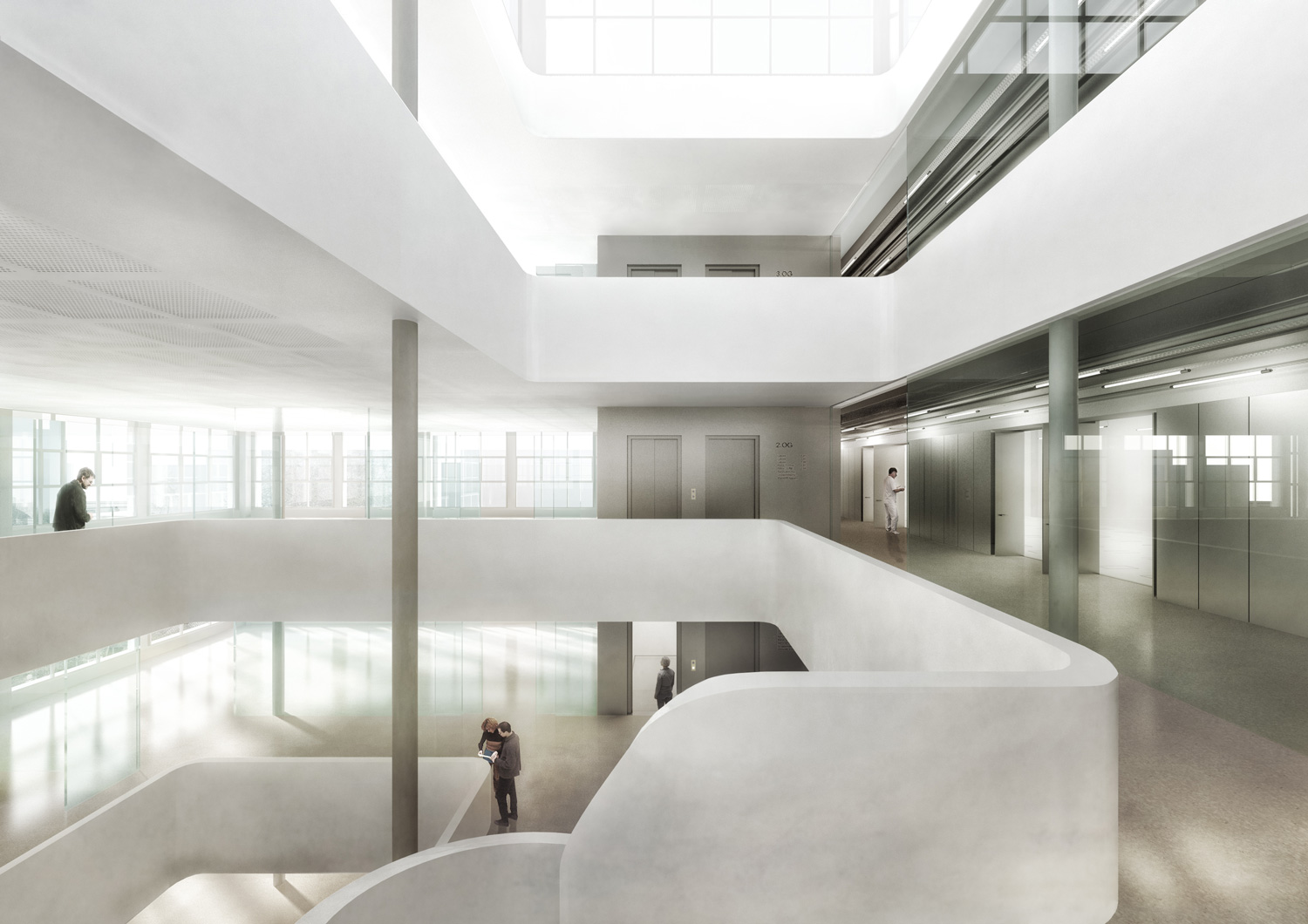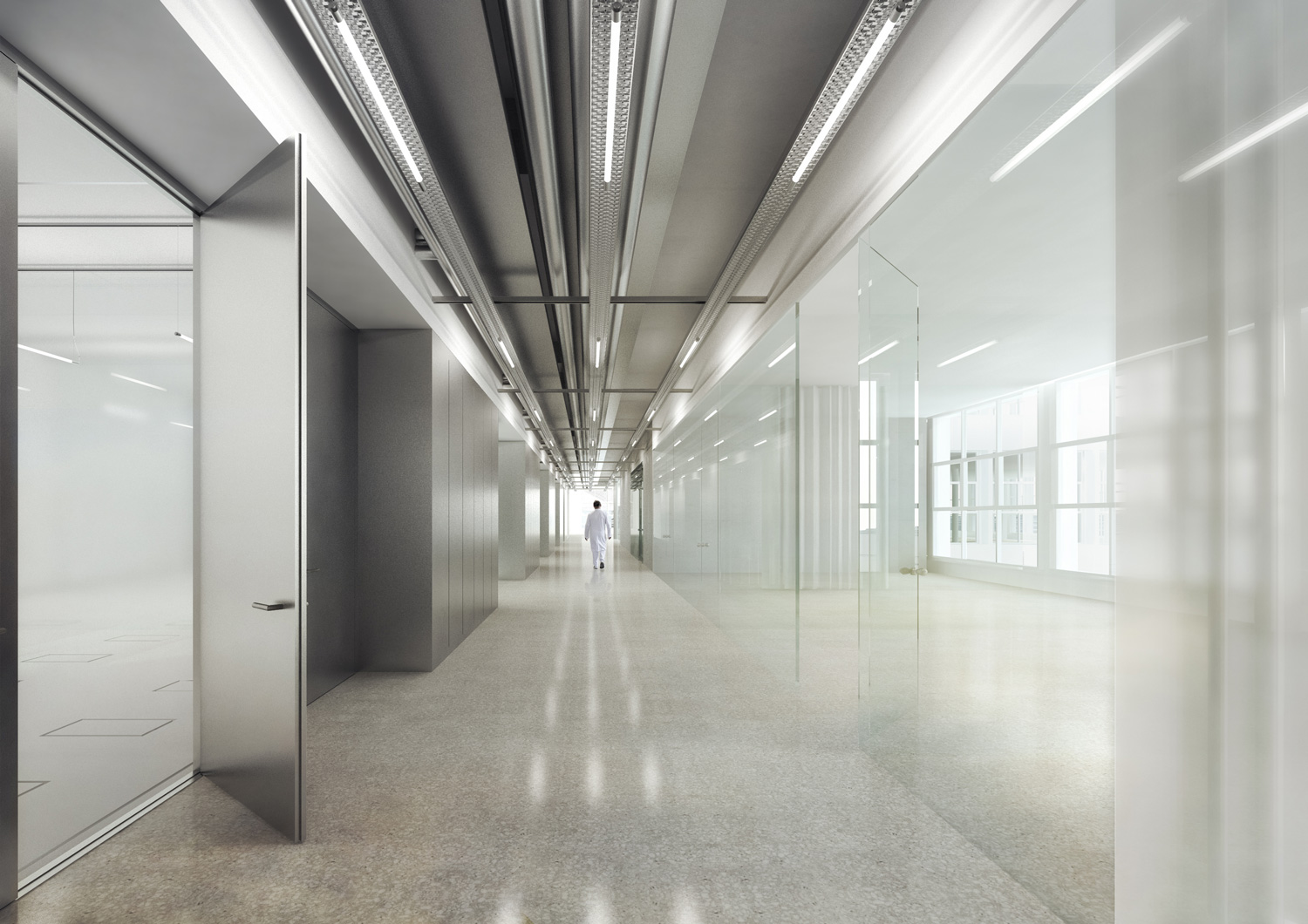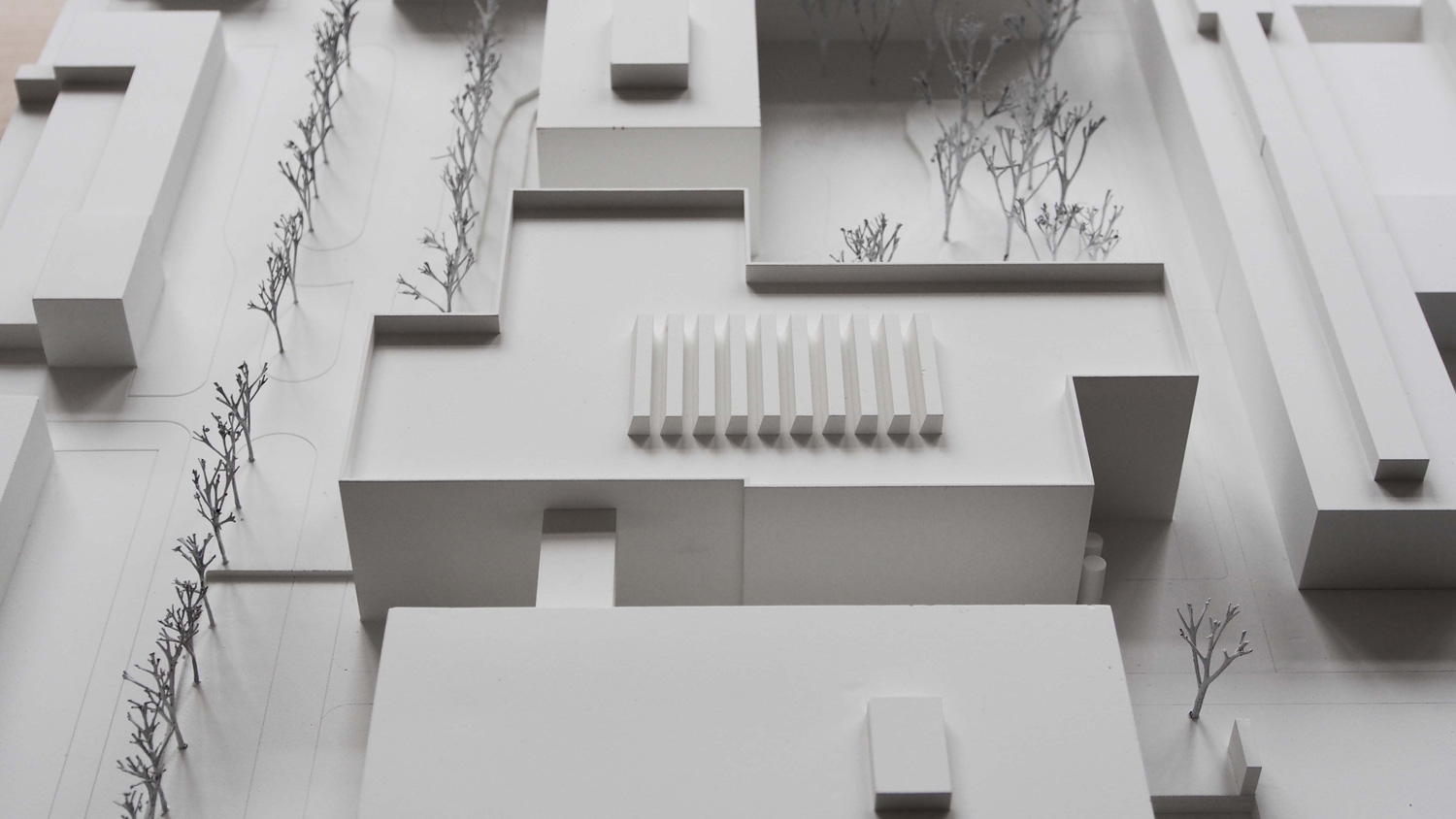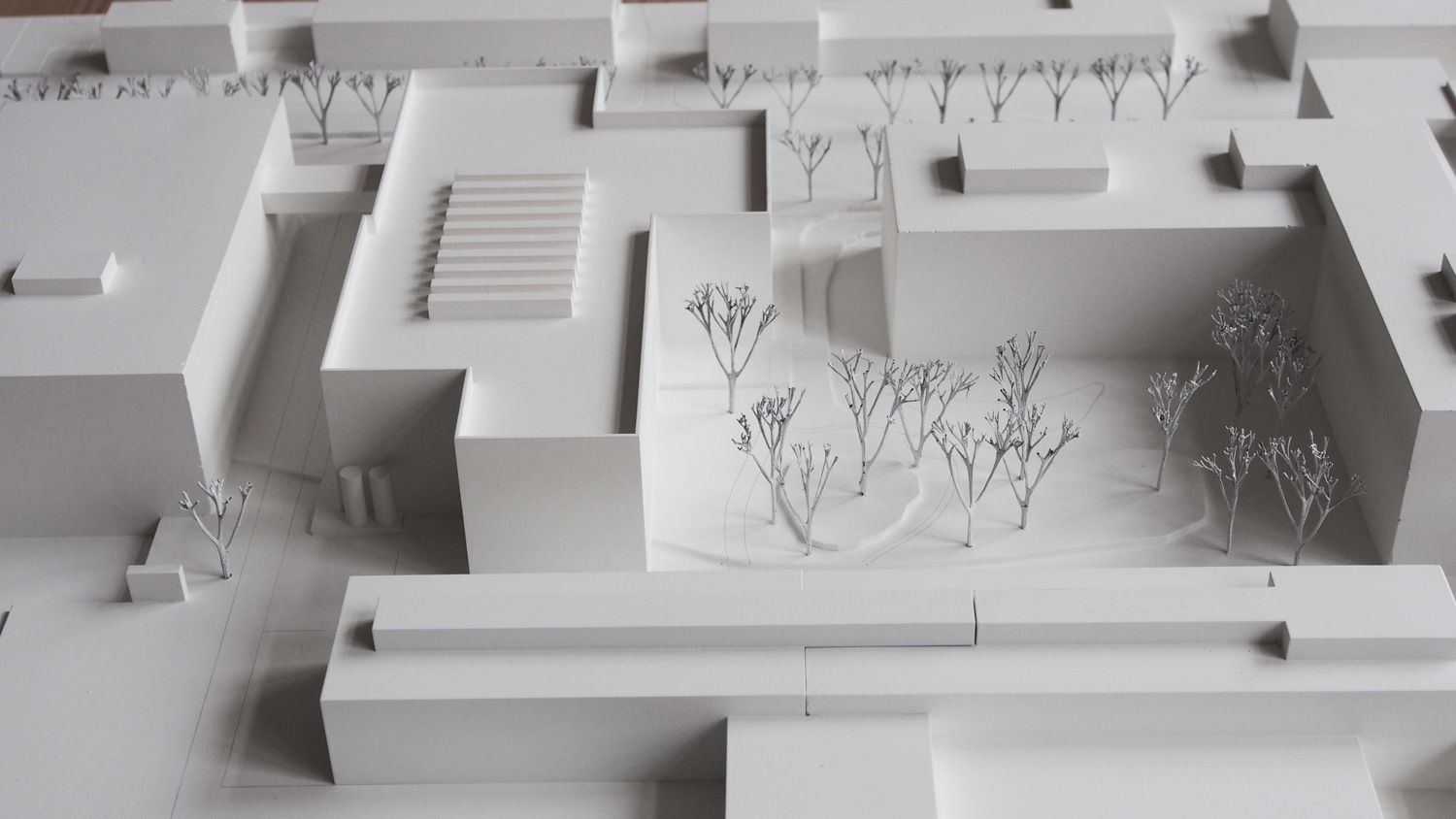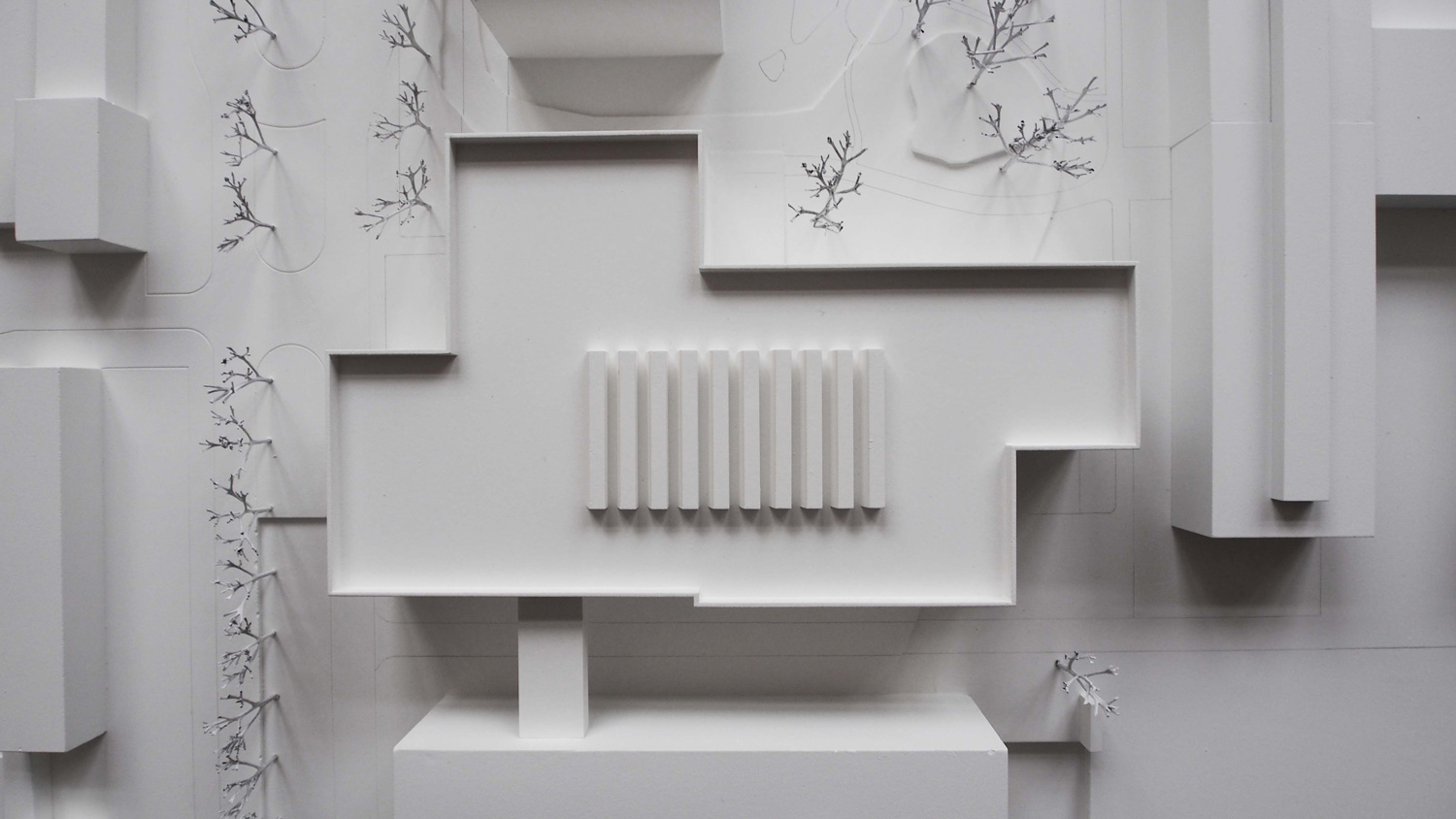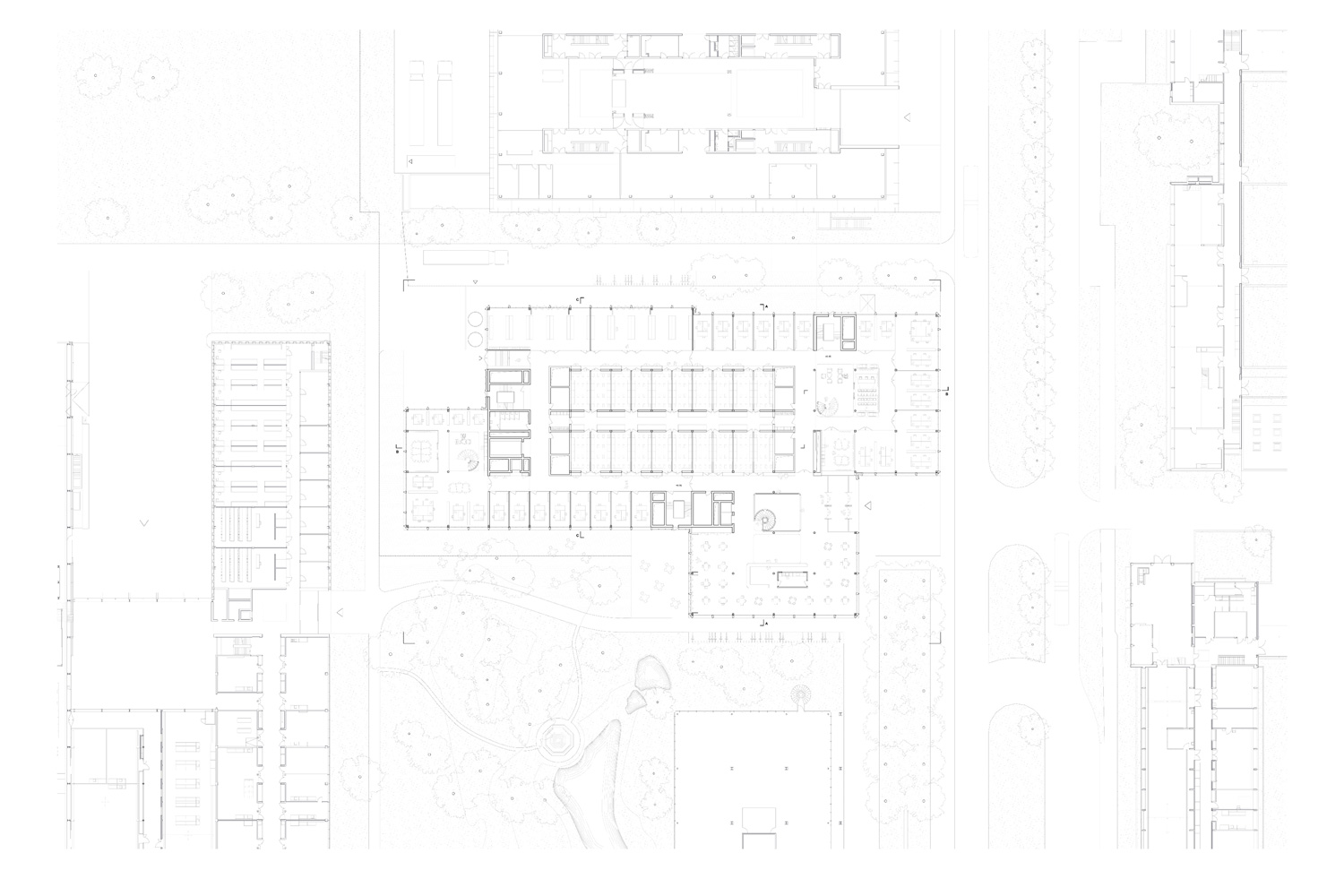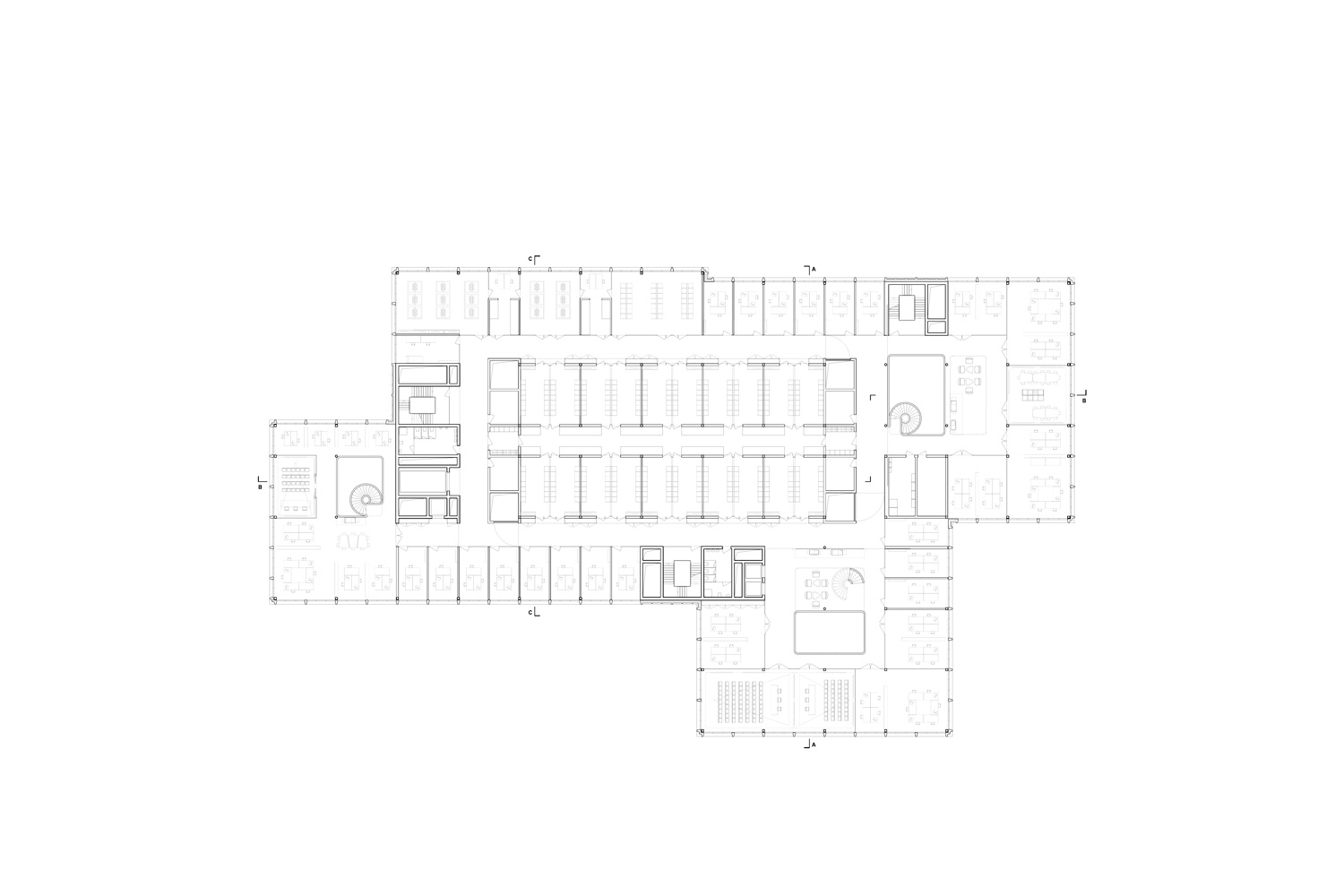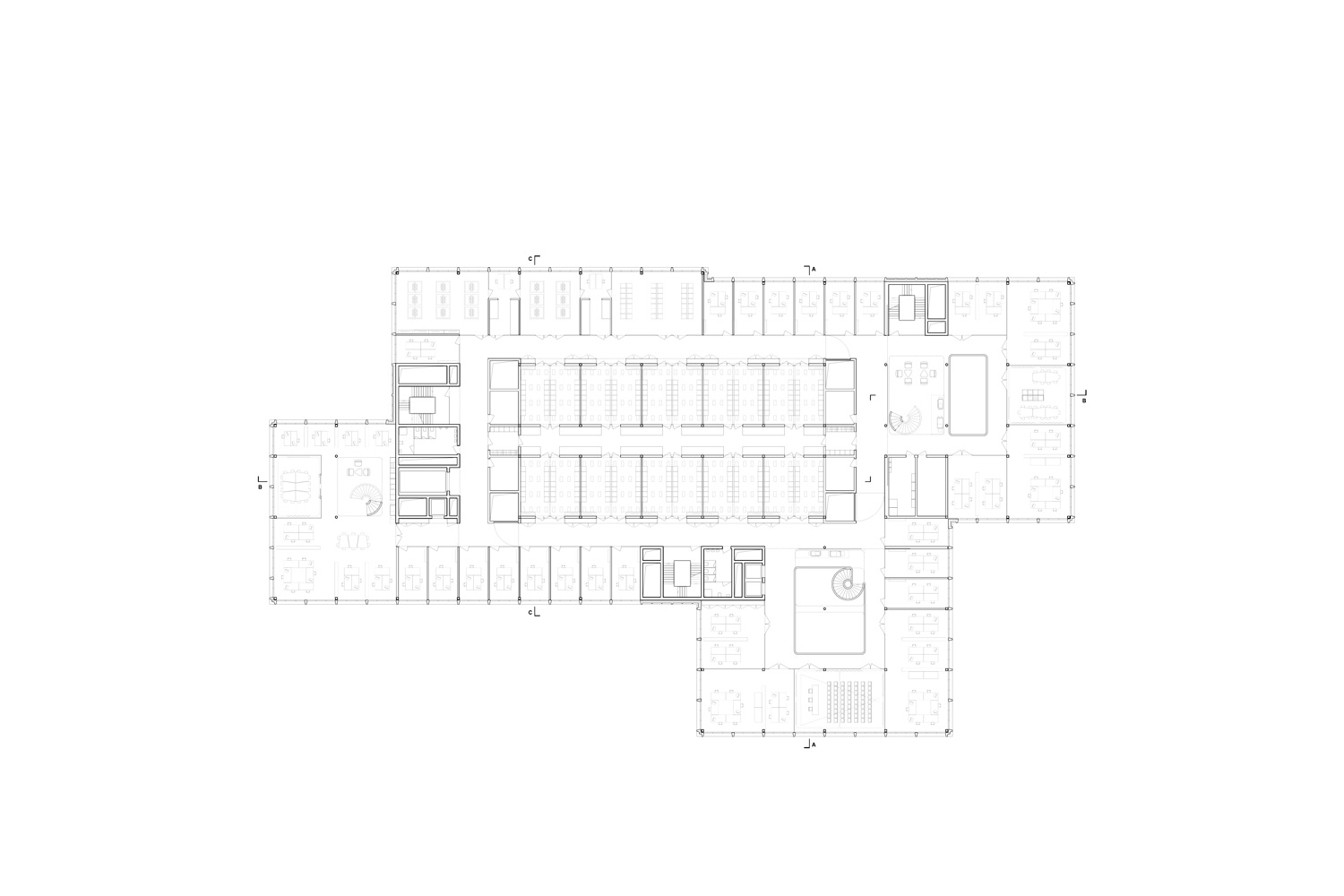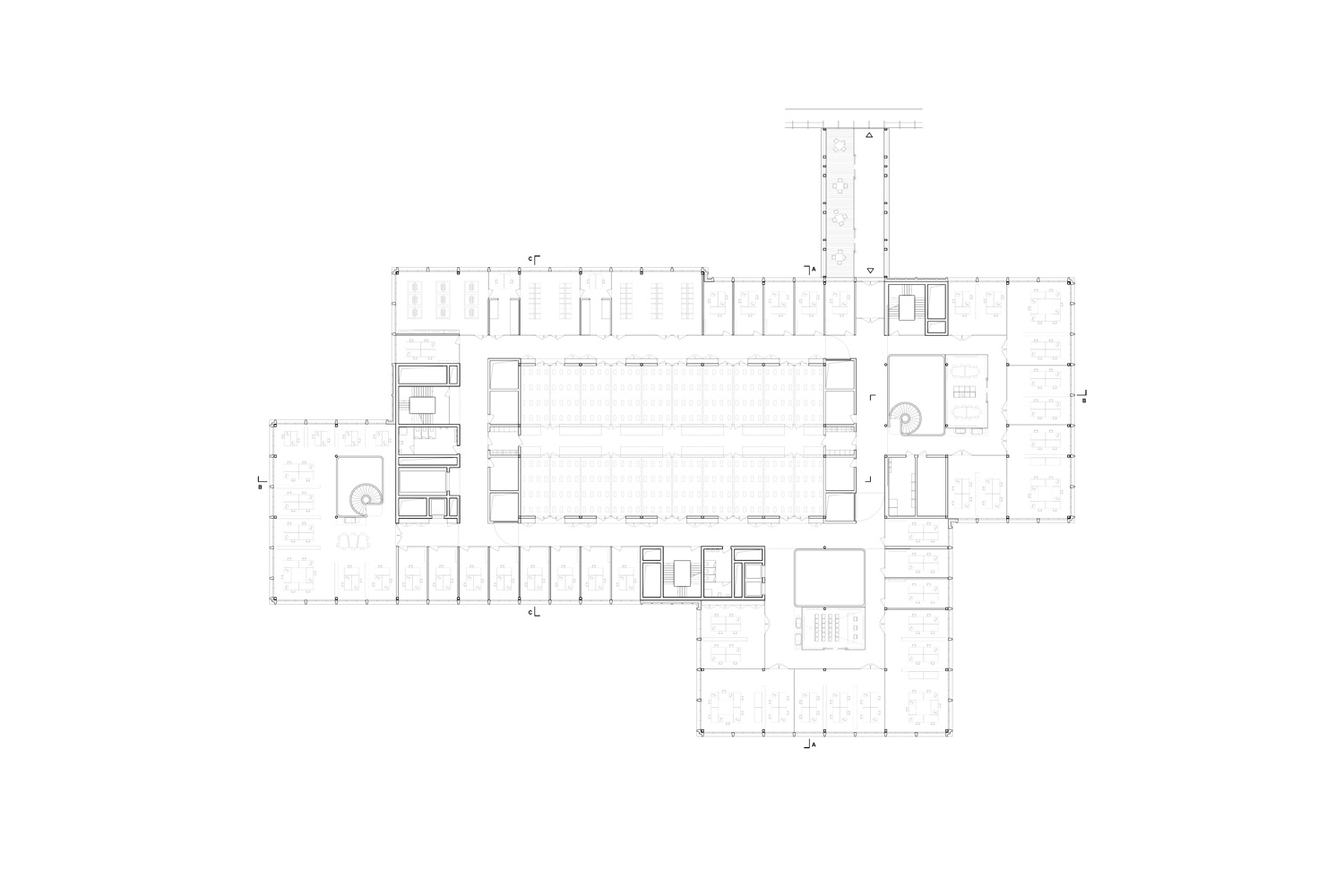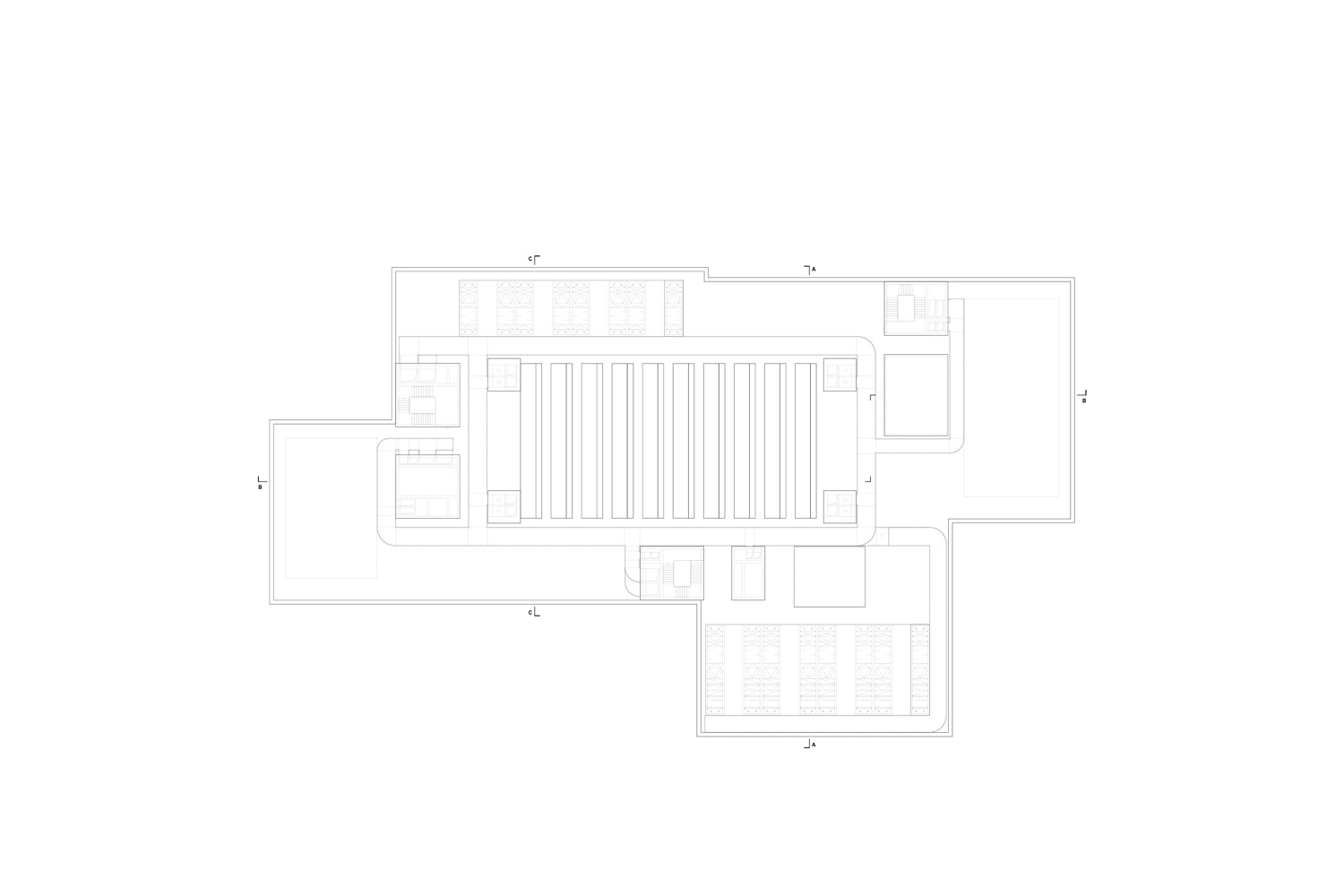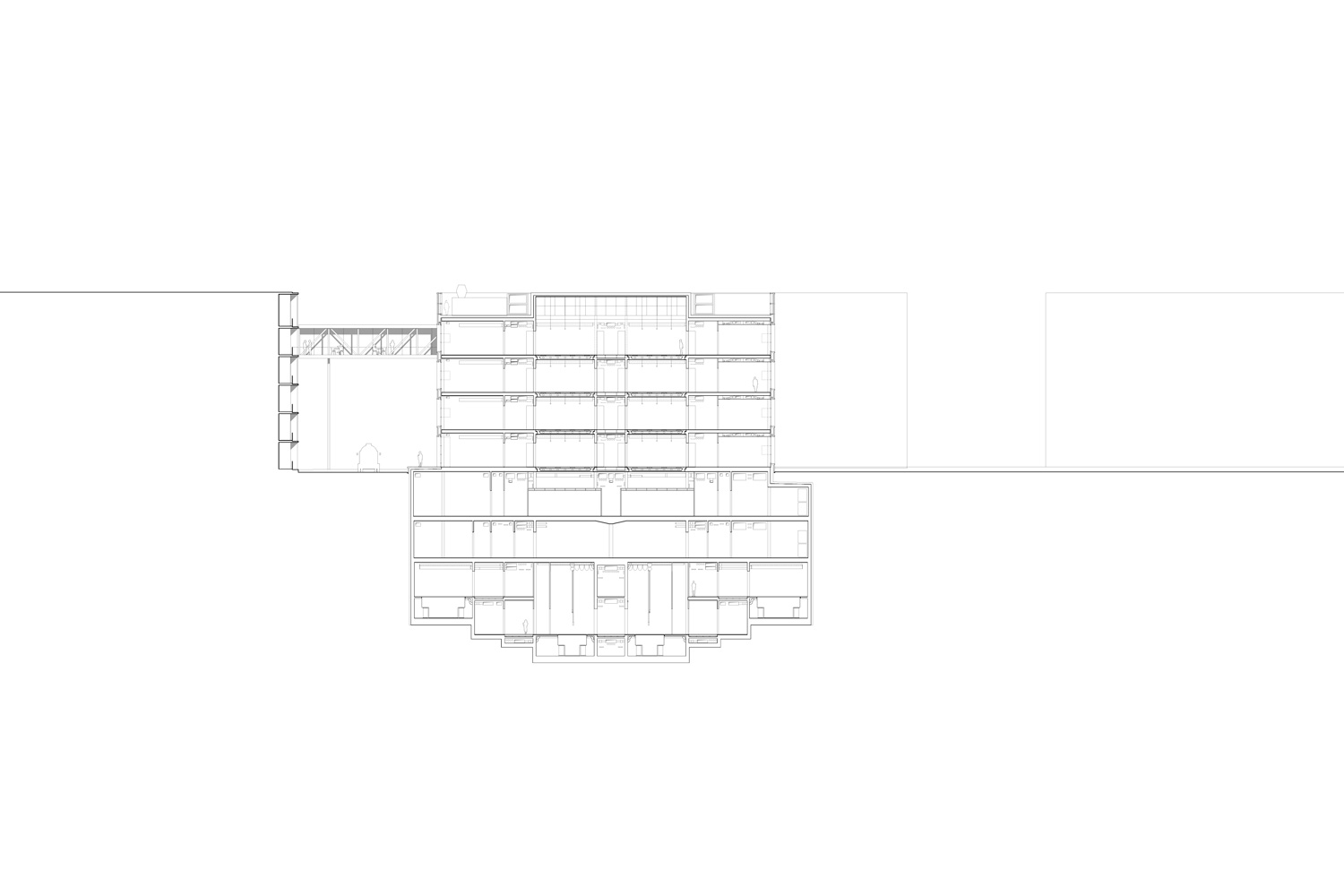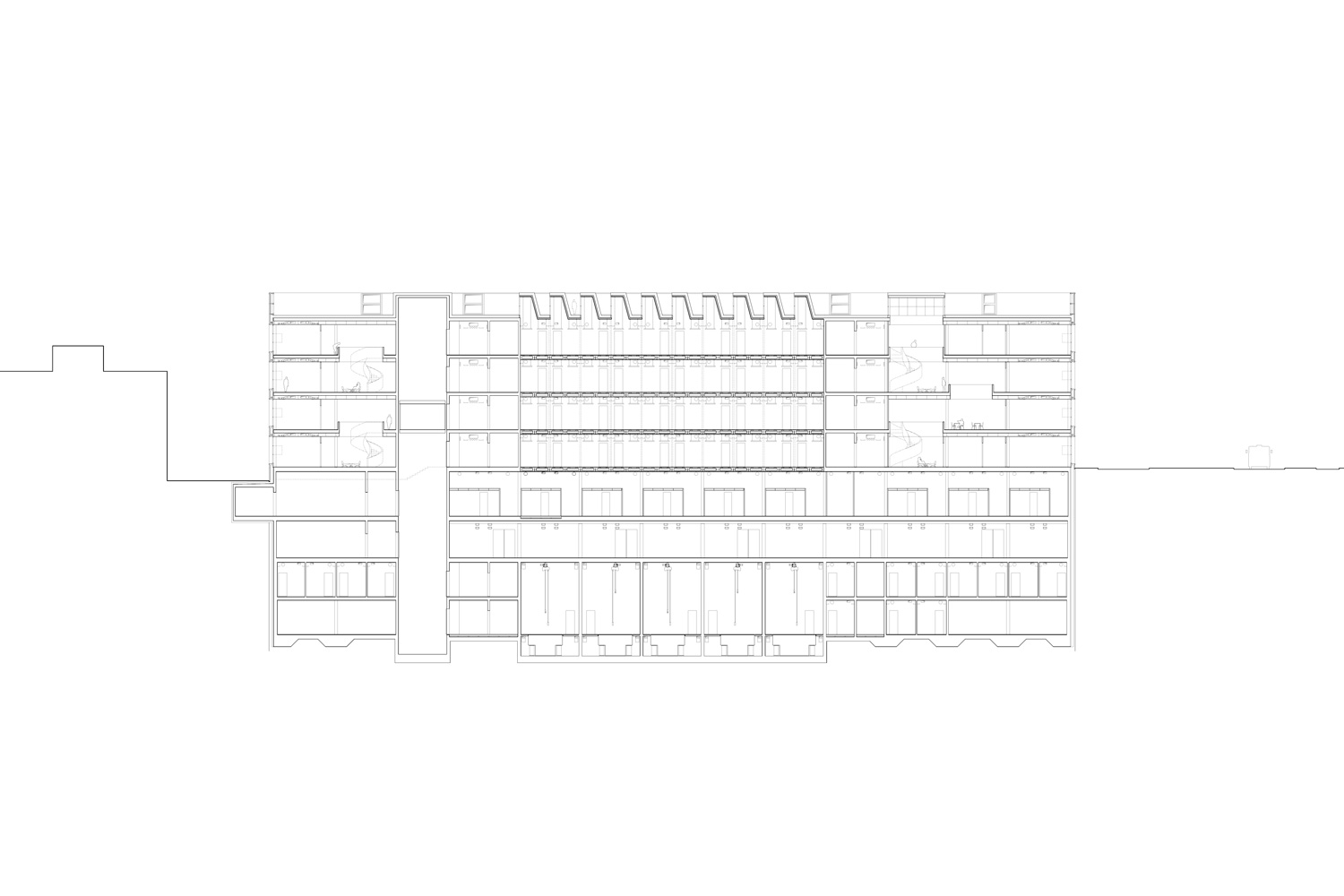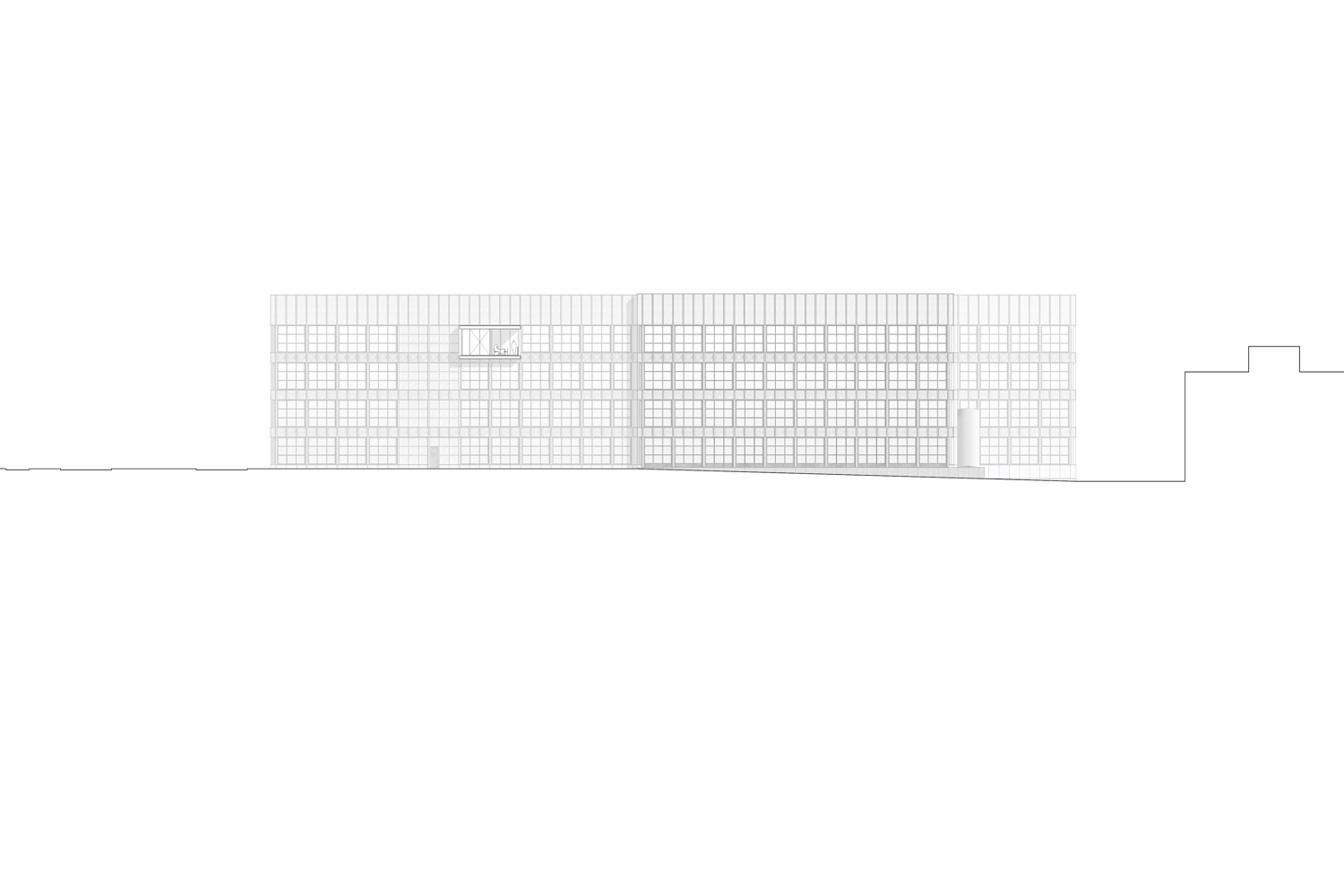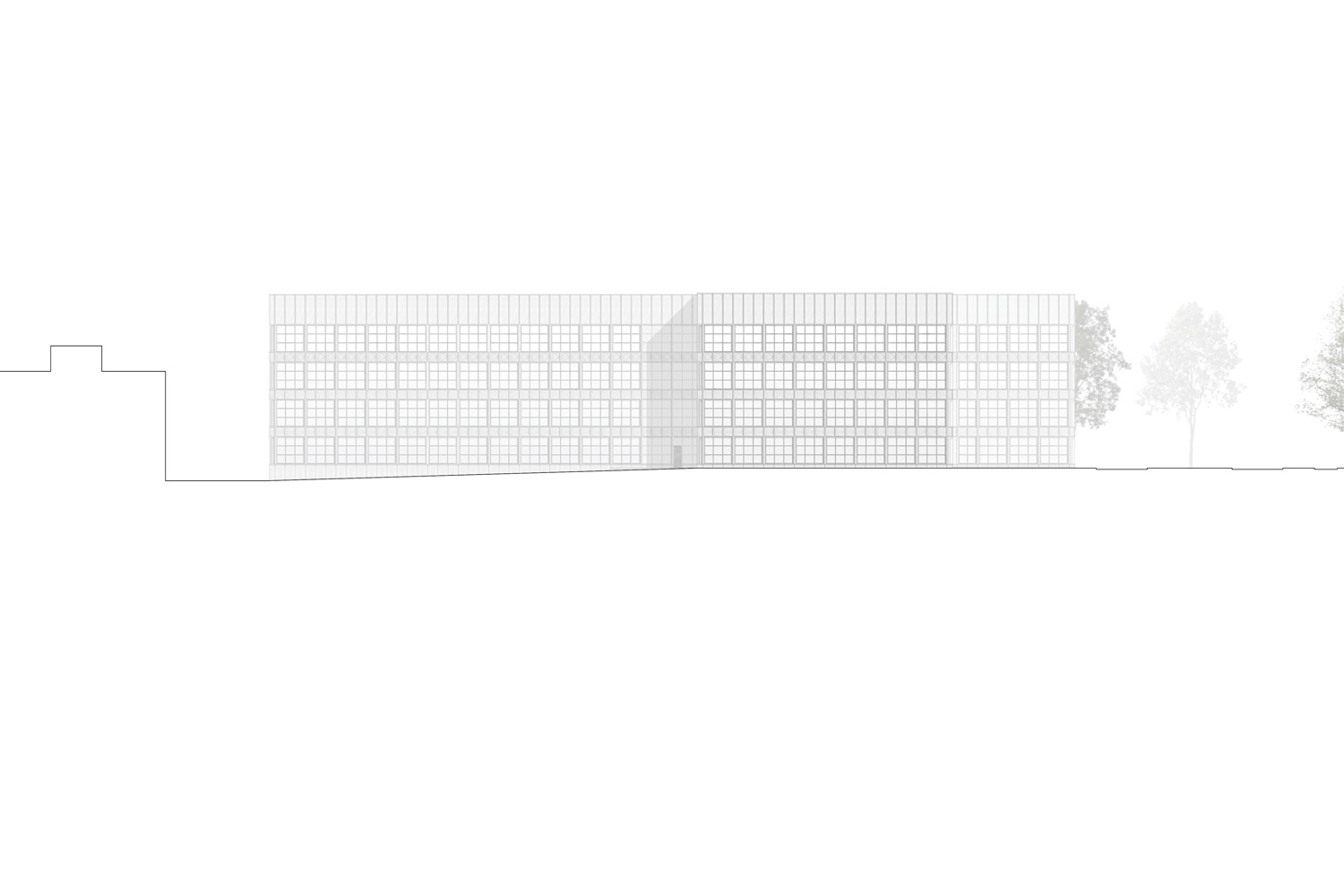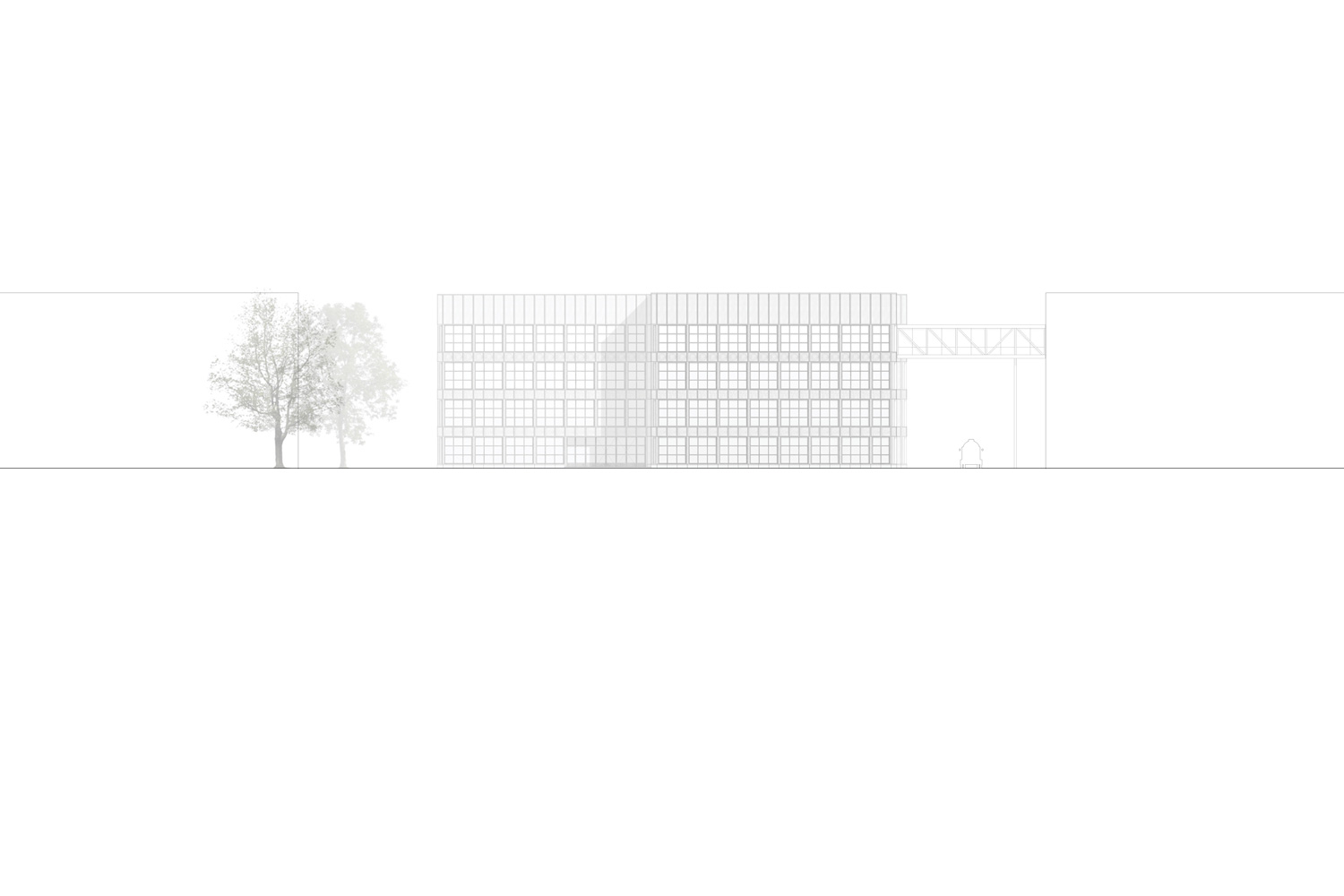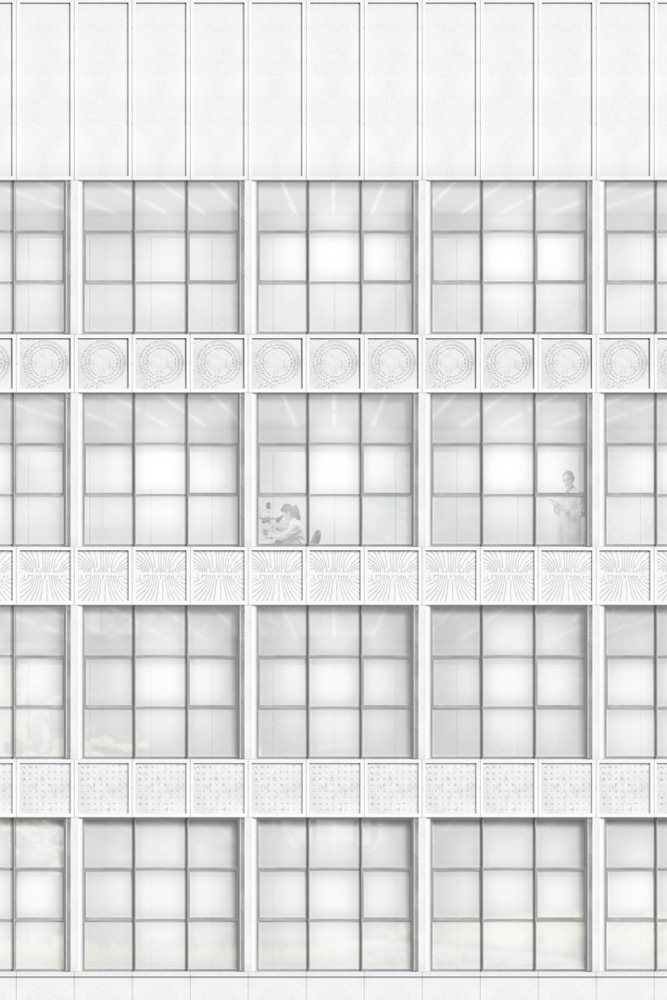☉ Department of Physics ETH EPQ is a proposal by Harry Gugger Studio developed in 2016. It is located in Zürich Switzerland in an urban setting. Its scale is large. Key materials are concrete and glass. Rablab collaborated as visualizer.
“From the campus to the urban quarter”. This was the main idea for the master plan of the “Science City”. In this particular case, how can the Laboratory and office building HPQ contribute in realization of such an urban quarter considering that urban morphology is often characterized by diversity, redundancy and breaks in both, volumetric and architectural expression. The neighboring HIT building, could be part of such an urban morphology, however it does not serve any of the previously described qualities.
The space program and its functional arrangement worked in the favour of the overall design. Located on the four floors, the offices and social rooms were distributed along the facades and provided with direct day light, while laboratory core was placed in the middle.
Further massing development was guided with the immediate neighboring buildings with the aim to concisely articulate the surrounding public space.
Laboratory Concept
The majority of the laboratory functions is organized in one block in the core of the building. The upper floors are reserved for the individual (professors) laboratories. The “FIRST II” laboratory is located on the first floor, while the “FAST” laser hall is located on the second floor with a supporting beam in order to reduce the number of columns. The “CLNE” at the most vibration intensive laboratories are situated on the lowest level of the building. By maximizing the floor space on this level, the building exploits the potential for low vibration research as far as possible.
The strategy of a central block of laboratories allows the individual laboratories to vary in size or to be regrouped to adjacent areas. Central infrastructure is vertically distributed and attached to the outside of the laboratory block so it doesn’t interrupt it’s continuity. Therefore the laboratory zones are free from the obstacles what allows adaptability according to different space requirements during the life cycle of the building.
Landscape concept
The exterior space is imagined according to the common vocabulary of existing spatial typologies of Hönggerberg; street areas, forecourts and courtyards. The Flora Ruchat Roncati Garden is connected to the GustavNaville
path; a graveled surface offers open work space under the freely placed trees that leads to the garden, while wrapping all the sides of the building with a green space.
Transparency of the cafeteria allowed the garden atmosphere to extend to WolfgangPauliStrasse; the urban forecourt with a gravel surface and randomly placed trees and benches.

